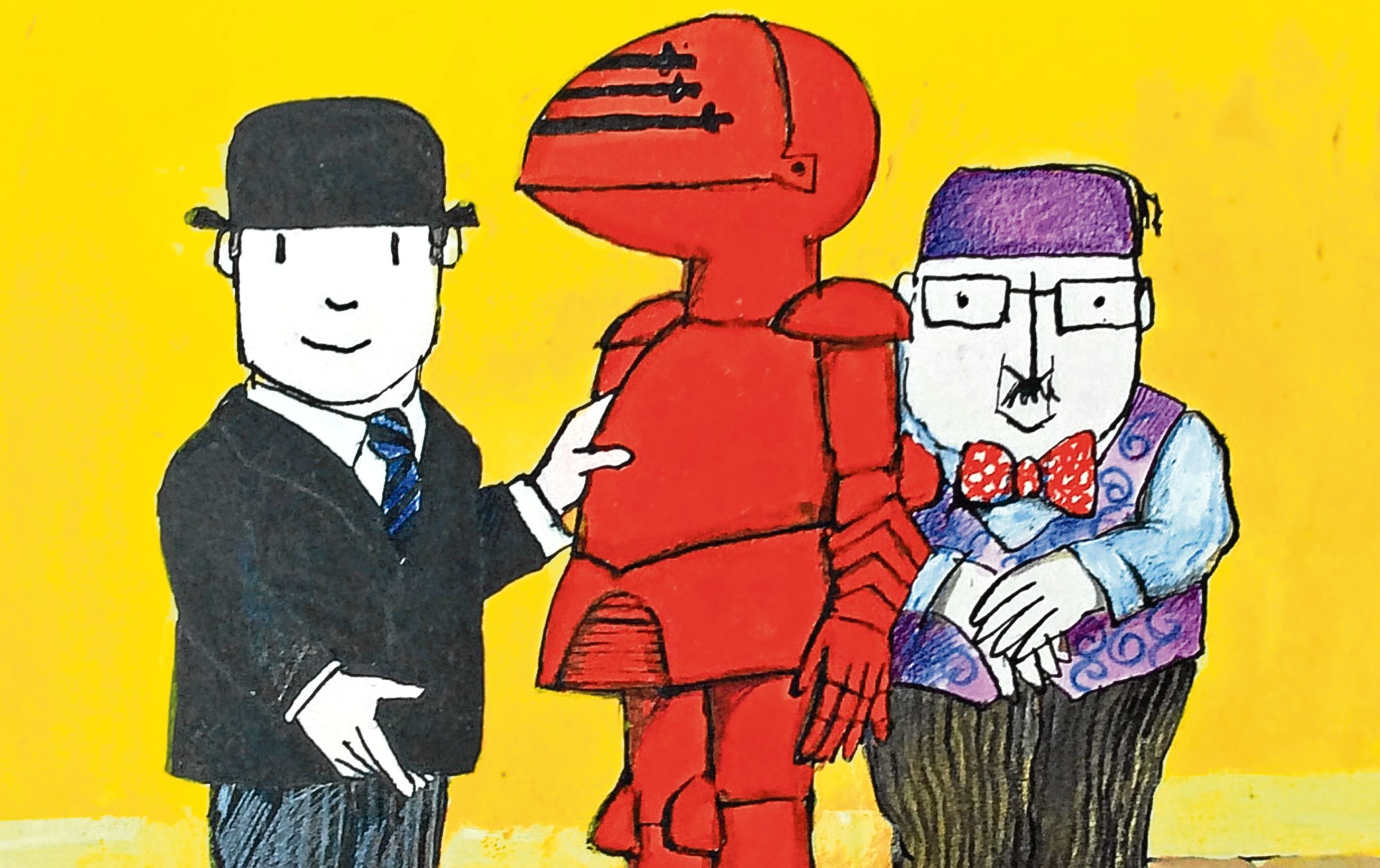
CHILDREN of the 70s and 80s will remember the plinky plonky music and turning wheel of costumes that marked the start of Mr Benn.
The dapper chap was arguably one of the gentlest, but most extraordinary, children’s characters ever created.
In the first episode, Red Knight, Mr Benn has been invited to a fancy-dress party, so goes in search of a suitable costume.
In a back street, he finds a fancy-dress shop, where “as if by magic, the shopkeeper appeared” and allows him to try on a red suit of armour.
Over the course of 13 episodes, originally shown in 1971 and ’72, and then repeated 42 times over the next 21 years, Mr Benn revisits the shop and has adventures that fit whichever costume he’s trying on, from flying into space, to taming a pirate.
The original Red Knight was not a cartoon at all, but a book that children’s author and illustrator David McKee wrote in 1967.
It captured imaginations at the BBC, who approached David to make a series.
As Mr Benn celebrates his 50th anniversary, 82-year-old David reveals some of the inspirations behind the character —
He says: “I tried to base him on being a nobody in a way, but also the people that I’ve loved over the years, like Laurel and Hardy and Charlie Chaplin and others who wore their bowler hats.”
But the shopkeeper’s fez was based on one of David’s own hats.
“I have quite a few hats and somebody gave me a fez at one time and I just thought: ‘I have to use this — somebody has to wear this!’” he reveals.
“It’s amazing how the stories are affected by your ordinary life.”
So is there a little bit of David in Mr Benn?
“There must be, I guess, because all art they say is self-portraiture,” says David.
“Certainly in the philosophy, I suppose, because he’s not really a superhero or anything, he’s more of a catalyst, or he suggests things — he’s a very quiet kind of hero.”
The fancy-dress shop itself was based on an antiques shop in Devon.
As David explains: “It was a mix of antiques and second-hand stuff in a back street in Plymouth, where nothing ever seemed to change and the guy obviously wasn’t interested in selling anything!”
As for Mr Benn’s home in Festive Road, it was named after the street David lived on at the time.
“In reality, it’s Festing Road, in Putney, and I changed it to Festive because Festing doesn’t sound too good!” he says, adding that in real life, he and his family lived at Number 54, next door to Mr Benn at Number 52.
“I have three children and the youngest is 52, so the first book would have come out when he was about two and I’ve drawn them in that first book and I’m looking out of the window.”
David’s success is all the more remarkable, because he had no experience in children’s TV.
“It was much simpler back then,” he says.
“I was given a free hand by the BBC. I had a rough idea about how the films could work and not too much animation because the budget was very limited.
“I did the detailed drawings, which we did a lot of camera movement on, but it was much more homemade.
“Like many people, my parents didn’t have television. About the time Mr Benn was due to come out, they would go into a local TV shop and ask to watch the BBC!”
David’s still hard at work today, and is also famous for the Elmer books, Not Now Bernard and King Rollo.
He reveals: “It’s about this time of year I finish another book.
“I’m very busy working on Elmer at the moment — I do about one a year, so this one will be for next year some time.
“The routine is any time I can get to the table to draw or get to the easel to paint, I do.”
But books aside, there’s a Mr Benn film as well as an opera in the works.
“The libretto for the opera is written and the Welsh National Opera did a production of the first part of it,” says David. “To have an opera, that’s a bit special.
“The film is quite advanced, it’s more than talk, they’ve actually got a script that people like and we’re waiting on a day-to-day basis to find out if it’s likely to go ahead.
“I’m not involved at all with it,” adds David. “It’s like your children — you have to let them grow up!”
Fifty Years of Mr Benn with David McKee is at the Illustrationcupboard Gallery in London until September 16. Visit illustrationcupboard.com for details.

Enjoy the convenience of having The Sunday Post delivered as a digital ePaper straight to your smartphone, tablet or computer.
Subscribe for only £5.49 a month and enjoy all the benefits of the printed paper as a digital replica.
Subscribe